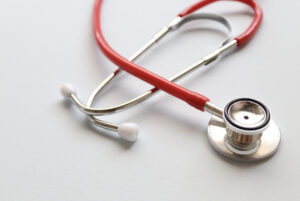Clinical protocols are set in place to define the appropriate guidelines in the diagnostic treatment and care of patients. The ultimate objective is to improve the overall quality of patient care.
A clinical protocol is a must in many healthcare settings. It is known to improve outcomes and safety in the delivery of patient care services. Discover the important role that clinical protocols play and how it can be improved to achieve its objectives and why the proper translation of these protocols is vital to patient safety and well-being.
What are Clinical Protocols?
 Clinical protocols are outlined in a document that describes the objectives, systems, processes, design, and methodology of an organisation. The use of clinical protocols is recommended in any healthcare and clinical settings, and the accurate translation of these documents is of the upmost importance.
Clinical protocols are outlined in a document that describes the objectives, systems, processes, design, and methodology of an organisation. The use of clinical protocols is recommended in any healthcare and clinical settings, and the accurate translation of these documents is of the upmost importance.
The goal of outlining the clinical protocols is to enable the healthcare providers to provide the most appropriate diagnostic procedure and treatment to patients. These protocols are established in compliance with a locally agreed standard among clinicians and regulating bodies or organisations.
The regulating organisation is responsible for overseeing the implementation of these protocols, as well as auditing in the event of an investigation. The protocols govern all aspects of health and patient care including but are not limited to the following:
- Patient records
- Clinical reporting
- Training for clinical staff
- Variance reports
- Clinical trials and research
The Purpose of Clinical Protocols
Clinical protocols are designed to improve the overall standard of healthcare and the deliverance of patient care in any healthcare or clinical settings. It breaks down the essential components that facilitate in providing quality care to patients and to reduce patient harm or risk.
The use of protocols is highly encouraged because of the ability to refine the methodologies that enable healthcare providers to assist in patient care. These protocols are continually evaluated and reviewed (as you will learn more of later on) to ensure that the best possible quality care is provided at all levels of healthcare.
 This document helps in the standardisation of patient care delivery through evidence-based care for patients. It should not be confused with healthcare procedures, although both are often interchanged. Protocols are a set of procedures and steps that must be followed in order to accomplish a set of objectives. On the other hand, procedures are task-oriented and provide a detailed list on how to accomplish a given task.
This document helps in the standardisation of patient care delivery through evidence-based care for patients. It should not be confused with healthcare procedures, although both are often interchanged. Protocols are a set of procedures and steps that must be followed in order to accomplish a set of objectives. On the other hand, procedures are task-oriented and provide a detailed list on how to accomplish a given task.
Protocols must be sufficiently detailed with a breakdown of coding, costing, and resource utilisation. It should also provide the framework and recommendations on how to effectively use the guidelines presented. This document must be updated frequently to ensure its relevance.
It can also be viewed as an analytical document. It serves the purpose of a blueprint or recipe; the document identifies and specifies the different components of a project. It has the primary objective of presenting an efficient and effective way of conducting patient and healthcare while maximising resources available.
Importance of Adaptation and Evaluation of Clinical Protocols
There are several reasons why the adaptation of a clinical protocol is a must and why it is standardised in the medical and healthcare industry. The most critical of them is the ability to formulate actionable steps along with clearly defined objectives and desired outcomes.
A clinical protocol also standardises the processes needed to achieve that objective. It involves a detailed plan of the procedures, systems, and methodologies that must be put in place. In doing so, the roles and responsibilities of each member of the staff is clearly defined to ensure accountability.
The standardisation of the healthcare procedures with the implementation of a written protocol guarantees that you can prevent non-compliance problems and errors (especially human-driven ones) in the future. It is also crucial in bridging the wide variations that exist among different healthcare settings and areas of practice. The most common types of clinical variation apply in terms of the difference in the age, history, weight, and severity of the condition for patient/s. Any variation that exists must be taken into account during the diagnosis and treatment as it can be a room for error.
Observing the standardised practice in healthcare as outlined in the protocol eliminates human error. The cornerstone of improved healthcare services hinges on the elimination of the variation in the processes involved. It increases reliability and makes it possible to obtain a higher level of success in providing quality patient care and the management of risks.
One study supports this claim citing that the adoption of one carefully planned management approach and the process of standardisation, through checklists and protocols, can yield results that are superior to several individual yet randomised approaches.
In the event that a patient cannot be managed following the healthcare protocols in place, on the basis of valid clinical reasons, this should be properly documented. The document must properly and clearly explain the rationale behind not following the recommended practice or set of protocols.
 Moreover, physicians and healthcare providers must have first-hand input on the design and development of the clinical protocols. It should not be imposed on them from external sources; otherwise, the clinical protocols might not be appropriate or evidence-based, reducing its effectiveness in the clinical and office setting.
Moreover, physicians and healthcare providers must have first-hand input on the design and development of the clinical protocols. It should not be imposed on them from external sources; otherwise, the clinical protocols might not be appropriate or evidence-based, reducing its effectiveness in the clinical and office setting.
Apart from the adoption of the clinical protocols, there should also be strict guidelines to be followed in terms of the evaluation of these recommended practices. As the needs of the patients might change and new studies become available, this set of protocols must be open for evaluation and revision, if necessary. This is a reflection of the healthcare organisation’s commitment to improving patient safety and quality of care. When deficiencies or enhanced methodologies are available, they must be open to adapt them in order to refine their practice and current methods.
What Should Clinical Protocols Include?
As mentioned earlier, clinical protocols should be sufficiently detailed. A well-written protocol is an important quality control tool in clinical settings. To ensure that it serves its purpose, this document must include the following elements as detailed in this template.
-
- Protocol summary – It is a concise and complete overview of all aspects of the protocol and its objectives.
- Objectives – It should cite the primary (and secondary objectives, if applicable) objectives for the set of protocols. The objective must be kept clear, well-defined, and achievable.
- Design and Methodology – This is the most important part of the clinical protocol. It details the methodologies and procedures that support the objectives of the organisation.
- Ethical Considerations – This is a statement provided by the organisation outlining the rights and confidentiality of patient-physician relationship. It also details the responsibilities of the healthcare providers in delivering quality patient care.
The use of a document like clinical protocol to outline the guidelines for the safety and quality of healthcare and patient care is only half the battle. The implementation is just as critical. However, the existence of this document puts you on the right path towards making sure that the processes and systems in place can facilitate quality care across all settings.

